Culture of Brazil
| Part of a series on the |
| Culture of Brazil |
|---|
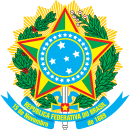 |
| Society |
|
| Topics |
|
| Symbols |
The culture of Brazil has been shaped by the amalgamation of diverse indigenous cultures, and the cultural fusion that took place among
As consequence of three centuries of
This diverse cultural background has helped show off many celebrations and festivals that have become known around the world, such as the Brazilian Carnival and the Bumba Meu Boi. The colourful culture creates an environment that makes Brazil a popular destination for many tourists each year, over 1 million.[7]
History
Brazil was a colony of
Modernism in Brazil started with the Modern Art Week held in São Paulo in 1922 and was characterized by experimentation and interest in Brazilian society and culture, as well as rebellion against influence from Europe and the United States and the orthodoxy of the Brazilian Academy of Letters.[13] Tarsila do Amaral and Oswald de Andrade were among the catalysts of the antropofagia movement in Brazil, with works such as Manifesto Pau-Brasil, Abaporu, and Manifesto Antropófago.[13][14] In the 1930s, sociologists such as Gilberto Freyre and Sérgio Buarque de Holanda published ideas about Brazilian culture, society, and identity, presenting concepts such as "racial democracy" and the "cordial man".[15]
During the military dictatorship (1964–1985) and especially following the Institutional Act Number Five in 1968, the government censorsed material—including art, literature, music, theater, film, etc.—that it deemed subversive or against "morality and good manners."[16] Tropicália or Tropicalismo was a movement against this repression and authoritarianism, from both the government and the Catholic Church.[17] Part of the counterculture of the 1960s, Tropicalismo was led by figures such as Gilberto Gil and Caetano Veloso and manifested itself primarily in music.[18]
Language
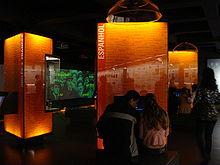
The official language of Brazil is Portuguese. It is spoken by about 99% of the population, making it one of the strongest elements of national identity.[19] There are only some Amerindian groups and small pockets of immigrants who do not speak Portuguese.
Similarly to American English and Canadian French, Brazilian Portuguese is more phonetically conservative or archaic than the language of the colonizing metropolis, maintaining several features that European Portuguese had before the 19th century.[20][21][22]
Also similarly to the American English, the Brazilian regional variation as well as the European one include a small number of words of Indigenous American and African origin, mainly restricted to place names and fauna and flora.[23]
Minority languages are spoken throughout the nation. One hundred and eighty
The Brazilian Sign Language (not signed Portuguese – it likely is descended from the French Sign Language), known by the acronym LIBRAS, is officially recognized by law, albeit using it alone would convey a very limited degree of accessibility, throughout the country.
Religion
About 2/3 of the population are
In recent decades Brazilian society has witnessed a rise in
The African-Brazilian religion of Candomblé, with its orixá deities derived from Yoruba traditions, is particularly important in Salvador and Bahia in general.[30]
Carnival

The
Carnival is the most famous holiday in Brazil and has become an event of huge proportions. For almost a week festivities are intense, day and night, mainly in coastal cities.[32]
The typical genres of music of Brazilian carnival are:
)Cuisine (gastronomy)
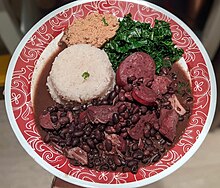
Brazilian cuisine varies greatly by region. This diversity reflects the country's history and mix of indigenous and immigrant cultures. This has created a national cooking style, marked by the preservation of regional differences.

Brazil has a variety of candies including
Literature

Literature in Brazil dates back to the 16th century, to the writings of the first Portuguese explorers in Brazil, such as
Brazil produced significant works in
My land has palm trees, Where the Thrush sings; The birds, that sing here, Do not sing as they do there.
from "Canção do exílio" by Gonçalves Dias.[59]
In the middle of the path there was a rock
There was a rock in the middle of the path
There was a rock
In the middle of the path there was a rock
from "No meio do caminho" by Carlos Drummond de Andrade

Visual arts
Painting and sculpture

The oldest known examples of Brazilian art are

The beginning of the 20th century saw a struggle between old schools and modernist trends. Important modern artists
In recent years, names such as Oscar Araripe, Beatriz Milhazes and Romero Britto have been well acclaimed.
Architecture

Brazilian architecture in the colonial period was heavily influenced by the Portuguese Manueline style, albeit adapted for the tropical climate. A UNESCO World Heritage Site, the city of Ouro Preto in the state of Minas Gerais contains numerous well-preserved examples of this style by artists such as Aleijadinho.[85]
In later centuries, Brazilian architects were increasingly influenced by schools from other countries such as France and the United States, eventually developing a style of their own that has become known around the world. Architects such as Oscar Niemeyer have received much acclaim, with the Brazilian capital Brasília being the most notable example of modern Brazilian architecture.[86] Niemeyer received the Pritzker Architecture Prize in 1988, and in 2006 the prize was awarded to Brazilian architect Paulo Mendes da Rocha.
In recent decades, Brazilian
Photography
Cinema and theater
Cinema

The documentary film Bus 174 (2002), by José Padilha, about a bus hijacking, is the highest rated foreign film at Rotten Tomatoes.[95] O Pagador de Promessas (1962), directed by Anselmo Duarte, won the Palme d'Or at the 1962 Cannes Film Festival, the only Brazilian film to date to win the award.[96]
Theater

Theatre was not included in the 1922
The 1956 premier of Orfeu da Conceição by Vinicius de Moraes, with compositions from Antônio Carlos Jobim and a cast drawn from Abdias do Nascimento's Teatro Experimental do Negro, was a landmark event in Brazilian culture. In the 1960s, many playwrights, such as Gianfrancesco Guarnieri, Augusto Boal, Dias Gomes, Oduvaldo Vianna Filho and Plínio Marcos, used theatre as a means of opposing the military regime. With the end of military regime and the end of censorship in the 1980s, theatre would again grow in themes and styles.
Contemporary names include Gerald Thomas, Ulysses Cruz, Aderbal Freire-Filho, Eduardo Tolentinho de Araújo, Cacá Rosset, Gabriel Villela, Márcio Vianna, Moacyr Góes and Antônio Araújo.[103]
Music

Samba
Samba is among the most popular music genres in Brazil and is widely regarded as the country's national musical style. It developed from the mixture of European and African music, brought by slaves in the colonial period and originated in the state of Bahia.[105] In the early 20th century, modern samba emerged and was popularized in Rio de Janeiro behind composers such as Noel Rosa, Cartola and Nelson Cavaquinho among others. The movement later spread and gained notoriety in other regions, particularly in Bahia and São Paulo. Contemporary artists include Martinho da Vila, Zeca Pagodinho and Paulinho da Viola.[106]
Samba makes use of a distinct set of instruments, among the most notable are the cuíca, a friction drum that creates a high-pitched squeaky sound, the cavaquinho, a small instrument of the guitar family, and the pandeiro, a hand frame drum. Other instruments are the surdos, agogôs, chocalhos and tamborins.[107]
Choro
Bossa nova and MPB


MPB (acronym for Música popular brasileira, or Brazilian Popular Music) was a trend in Brazilian music that emerged after the bossa nova boom. It presents many variations and includes elements of styles that range from Samba to Rock music.[112]
Tropicalismo
In the 1960s some MPB artists founded the short-lived but highly influential Tropicália or Tropicalismo movement, which attracted international attention. Among those were Caetano Veloso, Gilberto Gil, Gal Costa, Jorge Mautner,[113] Tom Zé, Nara Leão, Ney Matogrosso, Rita Lee,[114] and Os Mutantes.[115] Although the movement was rooted in music, it also found expression in film, theater, poetry, and politics.[113]
Sertanejo

Forró and frevo

Forró and Frevo are two music and dance forms originated in the Brazilian Northeast. Forró, like Choro, originated from European folk genres such as the schottische in between the 19th and early 20th centuries. It remains a very popular music style, particularly in the Northeast region, and is danced in forrobodós (parties and balls) throughout the country.[119]
Frevo originated in Recife, Pernambuco during the Carnival, the period it is most often associated with. While the music presents elements of procession and martial marches, the frevo dance (known as "passo") has been notably influenced by capoeira.[120] Frevo parades are a key tradition of the Pernambuco Carnival.
Classical music
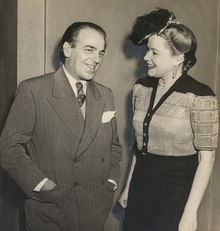
Brazil has also a tradition in the classical music, since the 18th Century. The oldest composer with the full documented work is
In the 20th century, Brazil had a strong modernist and nationalist movement, with the works of internationally renowned composers like Heitor Villa-Lobos, Camargo Guarnieri, César Guerra-Peixe and Cláudio Santoro, and more recently Marlos Nobre and Osvaldo Lacerda. Many famous performers are also from Brazil, such as the opera singer Bidu Sayão, the pianist Nelson Freire and the former pianist and now conductor João Carlos Martins.
The city of São Paulo hosts the Sala São Paulo, home of the São Paulo State Symphony Orchestra (OSESP), one of the most outstanding concert halls of the world. Also the city of Campos do Jordão hosts yearly in June the Classical Winter Festival, with performances of many instrumentists and singers from all the world.
Other genres
Many other genres have originated in Brazil, specially in recent years. Some of the most notable are:
- The hip hop.[121]
- Maracatu is another genre originated in the state of Pernambuco. It evolved from traditions passed by generations of African slaves and features large percussive groups and choirs.[123]
- Brega which literally means 'Tacky' is a hard to define music style from the state of Pará, usually characterized as influenced by Caribbean rhythms and containing simple rhymes, arrangements and a strong sentimental appeal. It has spawned subgenres such as tecno brega, which has attracted worldwide interest for achieving high popularity without significant support from the phonographic industry.[124]
- Brazilian rock
- Brazilian gaucho music
- Brazilian thrash metal
- Punk in Brazil
Dances

- Chula
- Vanerão
- Brazilian Zouk
- Carimbó
- Frevo
- Lambada
- Lundu
- Maculelê
- Maxixe
- Samba
- Suscia
- Xaxado
- Forró
- Hip-Hop
Popular culture

Television
Television has played a large role in the formation of the contemporary Brazilian popular culture. It was introduced in 1950 by Assis Chateaubriand and remains the country's most important element of mass media.
Folklore
Brazilian folklore includes many
Social media
Social media in Brazil is the use of social networking applications in this South American nation. This is due to economic growth and the increasing availability of computers and smartphones. Brazil is the world's second-largest user of Twitter (at 41.2 million tweeters), and largest market for YouTube outside the United States.[127] In 2012, average time spent on Facebook increased 208% while global use declined by 2%.[127] In 2013, Brazil ranked the second highest number of Facebook users globally at 65 million.[127] During this period, social media users in Brazil spent on average 9.7 hours a month online.[127]
Sports

Basketball, volleyball, auto racing, and martial arts also attract large audiences. Tennis, surfing, skateboarding, swimming, and gymnastics have found a growing sporting number of enthusiasts over the last decades. Some sport variations have their origins in Brazil. Beach football,[129] futsal (official version of indoor football),[130] and footvolley emerged in the country as variations of football.
In
São Paulo organized the
Family and social class
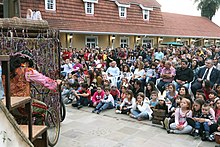


As a society with strong traditional values, the family in Brazil is usually represented by the couple and their children. Extended family is also an important aspect with strong ties being often maintained.[143] Accompanying a world trend, the structure of the Brazilian family has seen major changes over the past few decades with the reduction of average size and increase in single-parent, dual-worker and remarried families. The family structure has become less patriarchal and women are more independent, although gender disparity is still evident in wage difference.[144]
Brazil inherited a highly traditional and stratified
According to the anthropologist Alvaro Jarrin, "The body is a key aspect of
Social customs
In Brazilian culture, living in a community is vital due to the fact Brazilians are very involved with one another. "Brazilians organize their lives around and about others, maintain a high level of social involvement, and consider personal relations of primary importance in all human interactions. In fact, being with others is so important that they are rarely alone and perceive the desire to be alone as a sign of depression or unhappiness."[147] Due to the fact Brazilians are highly involved with social life, many friends, family members, or business partners join together to associate.
Although friend and family relationships have a large impact on Brazilian culture, business relationships are also crucial. "As Brazilians depend heavily on relationships with others, it is essential to spend time getting to know, both personally and professionally, your Brazilian counterparts. One of the most important elements in Brazilian business culture is personal relationships."[148] Brazilians maintain a comfortable business atmosphere by being respectful and using the correct greeting.
Upon greeting, Brazilians often express themselves physically. Women usually kiss the other individual on both cheeks and men usually give a pat on the back. Friendly gestures are used to greet one another. It is common for them to refer to the individual's social standing and then their first name when engaging in conversation. When Brazilians speak with an individual older than them, they address them as "senhor" (Mister) or "senhora" (Miss), accompanied by the individual's first name. In Brazil, the general rule is to use a formal greeting when communicating with people who are unfamiliar or older.[149]
Beauty



According to the anthropologist Alvaro Jarrin, "Beauty is constantly lived, breathed and incorporated as a social category in
Brazil has more
The general attitude in Brazil toward
There are marking differences between perceptions of beauty among working-class patients in public hospitals, and upper-middle class patients in private clinics. Plastic surgery is conceptualized by the upper-middle class mainly as an act of consumption that fosters distinction and reinforces the value of whiteness. In contrast, working-class patients describe plastic surgery as a basic necessity that provides the "good appearance" needed in the job market and "repairs" their bodies from the wear of their physical labor as workers and as mothers. Patients from different walks of life desire plastic surgery for different reasons.
The idea that physical appearance can denote class, with the implication that modifications in one's
Holidays
| Date | English name | Portuguese name | Remarks |
|---|---|---|---|
| January 1 | New Year's Day | Ano Novo/ Confraternização Universal | Celebrates the beginning of the Gregorian calendar year. Festivities include counting down to midnight on the preceding night. Traditional end of the holiday season. |
| March/April (Variable) | Good Friday | Sexta-feira Santa | Christian holiday, celebrates the passion and death of Jesus on the cross. |
| April 21 | Tiradentes' Day | Dia de Tiradentes | Anniversary of the death of Tiradentes (1792), considered a national martyr for being part of the Inconfidência Mineira, an insurgent movement that aimed to establish an independent Brazilian republic. |
| May 1 | Labor Day | Dia do Trabalhador | Celebrates the achievements of workers and the labor movement. |
| June (Variable) | Corpus Christi
|
Corpus Christi | A national Catholic holiday which celebrates the Eucharist and the belief of the real presence of Jesus in the host. |
| September 7 | Independence Day | Dia da Independência or 7 de Setembro | Celebrates the Declaration of Independence from Portugal on September 7, 1822.
|
| First and last Sunday in October | Election Day | Dia da Eleição or Eleições | In every 2 years, Brazilians have the obligation to vote. The first election round always happens on the first Sunday in October; if there necessary a second-round, this will happen on the last Sunday in the same October. |
| October 12 | Our Lady of Aparecida' Day | Dia de Nossa Senhora Aparecida | Commemorates the Patron Saint of Brazil. Also celebrated as Children's Day (Dia das Crianças) on the same date.
|
| November 2 | All Soul's Day
|
Dia de Finados | Another Christian holiday, it commemorates the faithful departed. |
| November 15 | Republic Day | Proclamação da República | Commemorates the end of the Brazilian Republic on November 15, 1889.
|
| December 25 | Christmas Day
|
Natal | Celebrates the nativity of Jesus. |
See also
- Latin American culture
- Tourism in Brazil
- Brazilian tea culture
References
- ^ "BRASIL CULTURA | O site da cultura brasileira". Archived from the original on April 5, 2009.
- ISBN 978-0-8160-7788-5.
- ^ "15th-16th Century". History. Brazilian Government official website. Archived from the original on 2007-06-15. Retrieved 2008-06-08.
- ^ "People and Society". Encarta. MSN. Archived from the original on 2009-10-29. Retrieved 2008-06-10.
- ^ a b "Population". Encarta. MSN. Archived from the original on 2009-10-29. Retrieved 2008-06-10. [dubious ]
- ^ Freyre, Gilberto (1986). "The Afro-Brazilian experiment – African influence on Brazilian culture". UNESCO. Archived from the original on January 24, 2008. Retrieved 2008-06-08.
- ^ "The Culture of Brazil". Archived from the original on 11 January 2012. Retrieved 20 September 2011.
- ^ "IBGE teen". 24 February 2013. Archived from the original on 24 February 2013.
- ^ "IBGE teen". 15 March 2008. Archived from the original on 15 March 2008.
- ^ "IBGE teen". 15 March 2008. Archived from the original on 15 March 2008.
- ^ "IBGE Educa". IBGE - Educa. Archived from the original on November 12, 2007.
- ^ "IBGE Educa". IBGE - Educa. Archived from the original on October 29, 2007.
- ^ a b "Modern Art Week and the Rise of Brazilian Modernism | Brazil: Five Centuries of Change". library.brown.edu. Archived from the original on June 16, 2016. Retrieved 2020-07-12.
- ^ "Tarsila do Amaral: Inventing Modern Art in Brazil | MoMA". The Museum of Modern Art. Archived from the original on February 16, 2024. Retrieved 2020-07-12.
- ISBN 978-65-5531-214-0.
- ISSN 0103-4014.
- ^ "Movement – Tropicália". tropicalia.com.br. Archived from the original on February 27, 2011. Retrieved 2020-07-12.
- ISBN 9780195301731. Retrieved 2020-07-12.
- ^ "A guide to Brazil – etiquette, customs, clothing and more…". Kwintessential. Archived from the original on 2012-01-11. Retrieved 2019-08-10.
- ISBN 9788588456655– via Google Books.
- ^ Noll, Volker, "Das Brasilianische Portugiesisch", 1999.
- ^ "O PORTUGUES BRASILEIRO: FORMAÇAO E CONTRASTES - 1ªED.(2008)". m.travessa.com.br. Archived from the original on September 23, 2017.
- ^ "Miscigenação da Língua Portuguesa". Brasil Escola. Archived from the original on April 5, 2024.
- ^ "O alemão lusitano do Sul do Brasil". DW-World.de. April 20, 2004. Archived from the original on March 23, 2005.
- ^ "Talian (VÊNETO BRASILEIRO)". labeurb.unicamp.br. Archived from the original on March 10, 2004.
- ^ "The New Seven Wonders of the World". Hindustan Times. July 8, 2007. Archived from the original on September 30, 2007. Retrieved July 11, 2007.
- ^ "Basílica de Aparecida aguarda 160 mil pessoas". Terra.
- ^ Ramos, Jefferson Evandro Machado. "Jesuítas na História do Brasil". suapesquisa.com. Archived from the original on April 11, 2024. Retrieved 21 September 2011.
- ^ "Número de evangélicos aumenta 61% em 10 anos, aponta IBGE". G1. Globo. 29 June 2012. Archived from the original on July 2, 2012. Retrieved 10 July 2012.
- S2CID 57558875.
- ^ "2010 Population Census - General characteristics of population, religion and persons with disabilities (Portuguese)". ibge.gov.br (in Portuguese). 2012-11-16. Archived from the original on 2012-11-16. Retrieved 2019-08-10.
{{cite web}}: CS1 maint: unfit URL (link) - ^ Ho, Jeevan (June 22, 2022). "Brazil's Famous Carnival Holiday – Renata Pauperio from Brazil". topics-mag.com. Archived from the original on February 4, 2004.
- ^ a b "Way of Life". Encarta. MSN. Archived from the original on February 18, 2004. Retrieved 2008-06-08.
- ^ Machado, João Luís de Almeida. "As origens da Feijoada". planetaeducacao.com. Archived from the original on February 28, 2009.
- ^ "Feijoada : the Brazilian national dish". WhyGo Brazil. June 26, 2008. Archived from the original on July 8, 2011. Retrieved 2009-11-08.
- ^ "Brazil National Dish: Feijoada Recipe and Restaurants". brazilmax.com. 2010-11-20. Archived from the original on September 23, 2005. Retrieved 2019-08-10.
- CASCUDO, Luís da Câmara. História da Alimentação no Brasil – 2 vols. 2ª ed. Itatitaia, Rio de Janeiro, 1983.
- ^ "TOTAL PRODUCTION OF EXPORTING COUNTRIES". Archived from the original on December 5, 2005.
- ^ "Boom Time for the Brazilian Coffee Industry". NATIONAL COFFEE ASSOCIATION BLOG. 29 January 2019. Archived from the original on 2020-04-18.
- ^ "Sabor do Café/História do café Archived March 5, 2010, at the Wayback Machine". Visited on November 8, 2009.
- ^ Impacto, Antonio Sergio Souza, Agência; Cafeicultura, Revista. "Café brasileiro mundo afora". Revista Cafeicultura.
{{cite web}}: CS1 maint: multiple names: authors list (link) - ^ Museu do Café. Café no Brasil. Visited on November 8, 2009.
- ^ Gislane e Reinaldo. História (Textbook). Editora Ática, 2009, p. 352
- ^ "There's an awful lot of coffee in – Vietnam". Retrieved 2008-07-21.
- ^ "An Awful Lot of Coffee in the Bin". Time. September 1967. Archived from the original on December 15, 2008. Retrieved 2008-07-21.
- ^ Philip Hoplins (July 2003). "More home-grown beans in the daily grind". The Age. Retrieved 2008-07-21.
- ^ There's an Awful Lot of Bubbly in Brazil: The Life and Times of a Bon Viveur: Amazon.co.uk: Alan Brazil, Mike Parry: 9781905156368: Books. ASIN 1905156367.
- ^ "FindArticles.com - CBSi". findarticles.com.
- ^ Caulkin, Simon (5 February 2006). "There's an awful lot of motivation in Brazil" – via www.theguardian.com.
- ^ Rohter, Larry (12 June 2001). "San Alberto Journal; Local Cry: An Awful Lot of Brazilians in Paraguay". The New York Times.
- ^ Candido, Antonio (1970). Vários escritos. São Paulo: Duas Cidades. p.18
- ^ "Literature". Encarta. MSN. Archived from the original on 2009-10-29. Retrieved 2008-06-08.
- ^ "Brazilian Literature: An Introduction Archived July 25, 2011, at the Wayback Machine". Embassy of Brasil – Ottawa. Visited on November 2, 2009.
- ^ a b "Antonio Gonçalves Dias". Article on Encyclopædia Britannica.
- ^ Caldwell, Helen (1970) Machado de Assis: The Brazilian Master and his Novels. Berkeley, Los Angeles and London, University of California Press.
- ^ Fernandez, Oscar Machado de Assis: The Brazilian Master and His Novels The Modern Language Journal, Vol. 55, No. 4 (Apr., 1971), pp. 255–256
- ^ João Cezar de Castro Rocha, "Introduction" Archived June 25, 2008, at the Wayback Machine. Portuguese Literature and Cultural Studies 13/14 (2006): xxiv.
- OCLC 49031283.
- ^ Gonçalves Dias. Song of the Exile. Translated by John Milton and disponible on The NeoConcrete Movement Archived July 6, 2011, at the Wayback Machine. Page visited on November 3, 2009.
- ^ Ha, T. H., "Clarice Lispector's Magical Prose", The Atlantic, August 21, 2015.
- ^ (in Portuguese) E-Dicionário de literatura Archived December 19, 2009, at the Wayback Machine. Visited on April 4, 2008.
- ^ (in Portuguese) Unnamed. "José Bento Monteiro Lobato reconta a Mitologia Grega Archived March 4, 2010, at the Wayback Machine", in: Recanto das Letras. Visited on May 13, 2009.
- ^ Anjos, Augusto. A Idéia
- ^ The Columbia Encyclopedia, Sixth Edition Copyright. 2004, Columbia University Press. Licensed from Lernout & Hauspie Speech Products N.V.
- ^ (in Portuguese) Terra, Ernani. De Nicola, José. Português: de olho no mundo do trabalho (Textbook), p.523. 3rd edition. Editora Scipione, São Paulo, 2006.
- ^ (in Portuguese) Terra, Ernani. De Nicola, José. Português: de olho no mundo do trabalho (Textbook), p.28
- ^ "Grande sertão: veredas - parte I". educaterra.terra.com.br (in Portuguese). 2005-04-13. Archived from the original on 2005-04-13. Retrieved 2019-08-10.
- ^ (in Portuguese) Terra, Ernani. De Nicola, José. Português: de olho no mundo do trabalho (Textbook), p.516.
- ^ (in Portuguese) Terra, Ernani. De Nicola, José. Português: de olho no mundo do trabalho (Textbook), p.517
- ^ "Vinícius de Moraes | Brazilian poet and lyricist". Encyclopedia Britannica. Retrieved 2020-08-18.
- ^ "Brazilian literature". Portuguese Culture. Retrieved 2019-08-10.
- ^ Almanaque Abril 2007. São Paulo: Editora Abril, 2007, p. 234.
- ^ "Martins, Simone B. & Imbroisi, Margaret H. História da Arte, 1988". Archived from the original on October 31, 2010.
- ^ Correa, Conceição Gentil. Estatuetas de cerâmica na cultura Santarém. Belém: Museu Paraense Emílio Goeldi, 1965.
- ^ KARNAL, Leandro. Teatro da Fé: Formas de Representação Religiosa no Brasil e no México do Século XVI. São Paulo, Editora Hucitec, 1998. "Livro". Archived from the original on 2013-07-24. Retrieved 2010-10-25.
- ^ a b c Cultural, Instituto Itaú. "Enciclopédia Itaú Cultural". Enciclopédia Itaú Cultural.
- ^ CONDURU, Roberto. Araras Gregas. In: 19&20 – A revista eletrônica de DezenoveVinte. Volume III, n. 2, abril de 2008 [1]
- ^ BISCARDI, Afrânio & ROCHA, Frederico Almeida. O Mecenato Artístico de D. Pedro II e o Projeto Imperial. In: 19&20 – A revista eletrônica de DezenoveVinte. Volume I, n. 1, maio de 2006 [2]
- ^ CARDOSO, Rafael. A Academia Imperial de Belas Artes e o Ensino Técnico. In: 19&20 – A revista eletrônica de DezenoveVinte. Volume III, n. 1, janeiro de 2008 [3]
- ^ FERNANDES, Cybele V. F. A construção simbólica da nação: A pintura e a escultura nas Exposições Gerais da Academia Imperial das Belas Artes. In: 19&20 – A revista eletrônica de DezenoveVinte. Volume II, n. 4, outubro de 2007 [4]
- ^ "Art and Architecture". Encarta. MSN. Archived from the original on 2009-10-29. Retrieved 2008-06-08.
- ^ "Pintura Brasileira - Página Principal". Archived from the original on 2010-09-25. Retrieved 2010-08-26.
- ^ "Semana da Arte Moderna. Pitoresco Website". Archived from the original on April 14, 2010.
- ^ (in English) "Ismael Nery: Critical Commentary Archived March 11, 2012, at the Wayback Machine". On Itaú Cultural Visual Artes. Visited on November 8, 2009.
- ^ "BRAZIL - Arquitetura". Archived from the original on 28 May 2011. Retrieved 21 September 2011.
- ^ "Brazil - Arquitetura". Archived from the original on 2011-05-28.
- ^ Rohter, Larry (2009-01-21). "A New Look at the Landscaping Artist Roberto Burle Marx". The New York Times. Retrieved 28 September 2011.
- ^ "Exposição Chichico Alkmim". fcs.mg.gov.br (in Brazilian Portuguese). November 2019. Archived from the original on 2021-10-27. Retrieved 2020-08-18.
- ^ Rohter, Larry (23 March 2015). "Sebastião Salgado's Journey From Brazil to the World". The New York Times.
- ISSN 0362-4331. Retrieved 2020-08-18.
- ^ Braga, Gabriel Ferreira (2011). "Entre o fanatismo e a utopia: trajetória de antônio conselheiro e do beato zé lourenço na literatura de cordel". Biblioteca Digital de Teses e Dissertações da UFMG. Retrieved 2019-08-10.
- ^ "Theater and Film". Encarta. MSN. Archived from the original on 2009-10-29. Retrieved 2008-06-08.
- ^ "Limite". The Criterion Collection. Retrieved 2020-12-21.
- ISBN 978-0-7190-6499-9.
- ^ Best of Foreign at Rotten Tomatoes. Retrieved 2009-10-27
- ^ "Festival de Cannes: O Pagador de Promessas". festival-cannes.com. Archived from the original on 2011-09-15. Retrieved 2009-02-23.
- ^ "All-Time 100". Time. 2005-02-12. Archived from the original on March 12, 2010.
- IMDb
- ^ "Revista de Cinema". www2.uol.com.br (in Portuguese). 2008-03-14. Archived from the original on 2008-03-14. Retrieved 2019-08-10.
- ^ "Filmes Nacionais Com Mais De Um Milhão De Espectadores (1970/2007)" (PDF). Agência Nacional do Cinema. Retrieved 2019-08-10.
- ^ "o maior portal sobre o mercado de cinema no Brasil". Filme B (in Portuguese). Retrieved 2019-08-10.
- ^ "Theatre". Archived from the original on 9 July 2011. Retrieved 28 September 2011.
- ^ "Theatre". Archived from the original on 9 July 2011. Retrieved 22 September 2011.
- OCLC 55911834.
- ^ "Samba music". Retrieved 22 September 2011.
- ^ "Samba e história do samba". Retrieved 22 September 2011.
- ^ "Samba Instruments". Archived from the original on 10 August 2011. Retrieved 22 September 2011.
- ^ "O que é choro?". Archived from the original on 1 October 2011. Retrieved 26 September 2011.
- ^ "Confraria de choro". Archived from the original on 6 December 2011. Retrieved 26 September 2011.
- ^ "A estética da bossa nova". Archived from the original on 10 July 2009. Retrieved 26 September 2011.
- ^ "Multirio". Retrieved 26 September 2011.[permanent dead link]
- ^ "Brasil 500 anos". Archived from the original on 2001-03-08. Retrieved 26 September 2011.
- ^ OCLC 741538920.
- ISSN 0362-4331. Retrieved 2023-05-30.
- ^ "Tripicalism". Archived from the original on 29 September 2011. Retrieved 26 September 2011.
- ^ "Música sertaneja". Archived from the original on 27 September 2011. Retrieved 26 September 2011.
- ^ CALDAS, Waldenyr (1979). Acorde na aurora: música sertaneja e a indústria cultural. São Paulo: Ed. Nacional.
- ^ "Sertanejo". Retrieved 26 September 2011.
- ^ "Forró in a nutshell". Retrieved 26 September 2011.
- ^ "Frevo". Retrieved 26 September 2011.
- ^ "Mangue bit". Archived from the original on 13 November 2011. Retrieved 26 September 2011.
- ^ "Candomblé sem mistério". Archived from the original on 19 December 2011. Retrieved 26 September 2011.
- ^ "Maracatu". Archived from the original on 8 February 2012. Retrieved 26 September 2011.
- ^ "Brega pop". Archived from the original on 4 April 2004. Retrieved 26 September 2011.
- ^ "Telenovela". Retrieved 27 September 2011.
- ^ "Brazilian folklore". Archived from the original on 20 July 2012. Retrieved 27 September 2011.
- ^ S2CID 46404139.
- ^ "Football in Brazil". Goal Programme. International Federation of Association Football. 2008-04-15. Archived from the original on June 4, 2007. Retrieved 2008-06-06.
- ^ "Beach Soccer". International Federation of Association Football. Archived from the original on June 23, 2007. Retrieved 2008-06-06.
- ^ "Futsal". International Federation of Association Football. Archived from the original on June 3, 2007. Retrieved 2008-06-06.
- ^ "What is Capoeira?". SCC. 2011-07-09. Archived from the original on 2012-03-26. Retrieved 2011-07-09.
- ^ "Brazilian Vale Tudo". I.V.C. Archived from the original on 1998-05-30. Retrieved 2008-06-06.
- ^ "Brazilian Jiu-Jitsu Official Website". International Brazilian Jiu-Jitsu Federation. Archived from the original on 2008-04-20. Retrieved 2008-06-06.
- ^ Donaldson, Gerald. "Emerson Fittipaldi". Hall of Fame. The Official Formula 1 Website. Retrieved 2008-06-06.
- ^ Donaldson, Gerald. "Nelson Piquet". Hall of Fame. The Official Formula 1 Website. Retrieved 2008-06-06.
- ^ Donaldson, Gerald. "Ayrton Senna". Hall of Fame. The Official Formula 1 Website. Retrieved 2008-06-06.
- ^ "1950 FIFA World Cup Brazil". Previous FIFA World Cups. International Federation of Association Football. Archived from the original on June 3, 2007. Retrieved 2008-06-06.
- ^ "2014 FIFA World Cup Brazil". International Federation of Association Football. Archived from the original on 2008-06-06. Retrieved 2008-06-06.
- ^ "Formula 1 Grande Premio do Brasil 2008". The Official Formula 1 Website. Retrieved 2008-06-06.
- ^ a b "Chronological list of Pan American Games". Pan American Sports Organization. Archived from the original on August 9, 2013. Retrieved 2008-06-06.
- ^ "Rio de Janeiro 2016 Olympic bid official website". Brazilian Olympic Committee. Archived from the original on 2008-06-07. Retrieved 2008-06-06.
- ^ The Guardian, October 2, 2009, Olympics 2016: Tearful Pele and weeping Lula greet historic win for Rio
- ^ "Brazilian family". Retrieved 27 September 2011.
- ^ Gender differences in Brazil
- ^ "Gini index". Retrieved 27 September 2011.
- ^ a b Alvaro, Jarrín. "Cosmetic Citizenship: Beauty, Affect and Inequality in Southeastern Brazil" (PDF). Department of Cultural Anthropology. Duke University. Retrieved 10 December 2013.
- ISBN 9780313304958.
- .
- ^ "Brazilian Culture - Greetings". Cultural Atlas. Retrieved 2019-11-17.
- ^ Do G1, em São Paulo (2010-08-27). "G1 - Metade dos adultos brasileiros está acima do peso, segundo IBGE - notícias em Brasil". G1.globo.com. Retrieved 2012-07-13.
{{cite web}}: CS1 maint: numeric names: authors list (link) - ^ "Body Measurements". Center for Control of Diseases. Retrieved 10 December 2013.
- ^ "The Welsh Health Survey 2009, p. 58" (PDF). Wales.gov.uk. 2010-09-15. Archived from the original (PDF) on 2013-09-16. Retrieved 2011-01-22.
- ^ "Model is remade for Playboy as Brazil goes under the scapel". The Guardian. 29 November 2000.
- ^ a b "Corpos a Venda". American Society for Aesthetic Plastic Surgery. 2001 Statistics. 6 March 2002.
- JSTOR 20027627.
- ^ "Made in Brazil: Why Brazil leads the way with beauty trends". Stylist. 13 June 2011. Archived from the original on 14 December 2013. Retrieved 10 December 2013.
- ^ "Cosmetic Surgery in Brazil". Off2Brazil. Archived from the original on 2013-12-03. Retrieved 7 December 2013.
- ^ Kulick, Don (2005). Fat: The Anthropology of an Obsession. New York, New York: Penguin Group. pp. 121–137.
- ^ H.J. (April 26, 2013). "Affirmative action in Brazil: Slavery's legacy". The Economist. London, UK. Retrieved March 20, 2015.
- ^ "Beauty and the Buck". Nielsen. Retrieved 8 December 2013.
- ^ Machado-Borges, Thaïs (2009). "Producing Beauty in Brazil: Vanity, Visibility and Social Inequality". Vibrant - Virtual Brazilian Anthropology. Brazilian Anthropological Association. 6 (1): 1–30.
External links
- Brazilian ministry of culture Archived 2022-01-02 at the Wayback Machine (in Portuguese)
- Consulate General of Brazil in San Francisco Archived 2011-07-21 at the Wayback Machine
- Eyes On Brazil – Brazilian Cultural Site
- Brazilian Culture Lib Guide
- Brazilian Cultural Center

